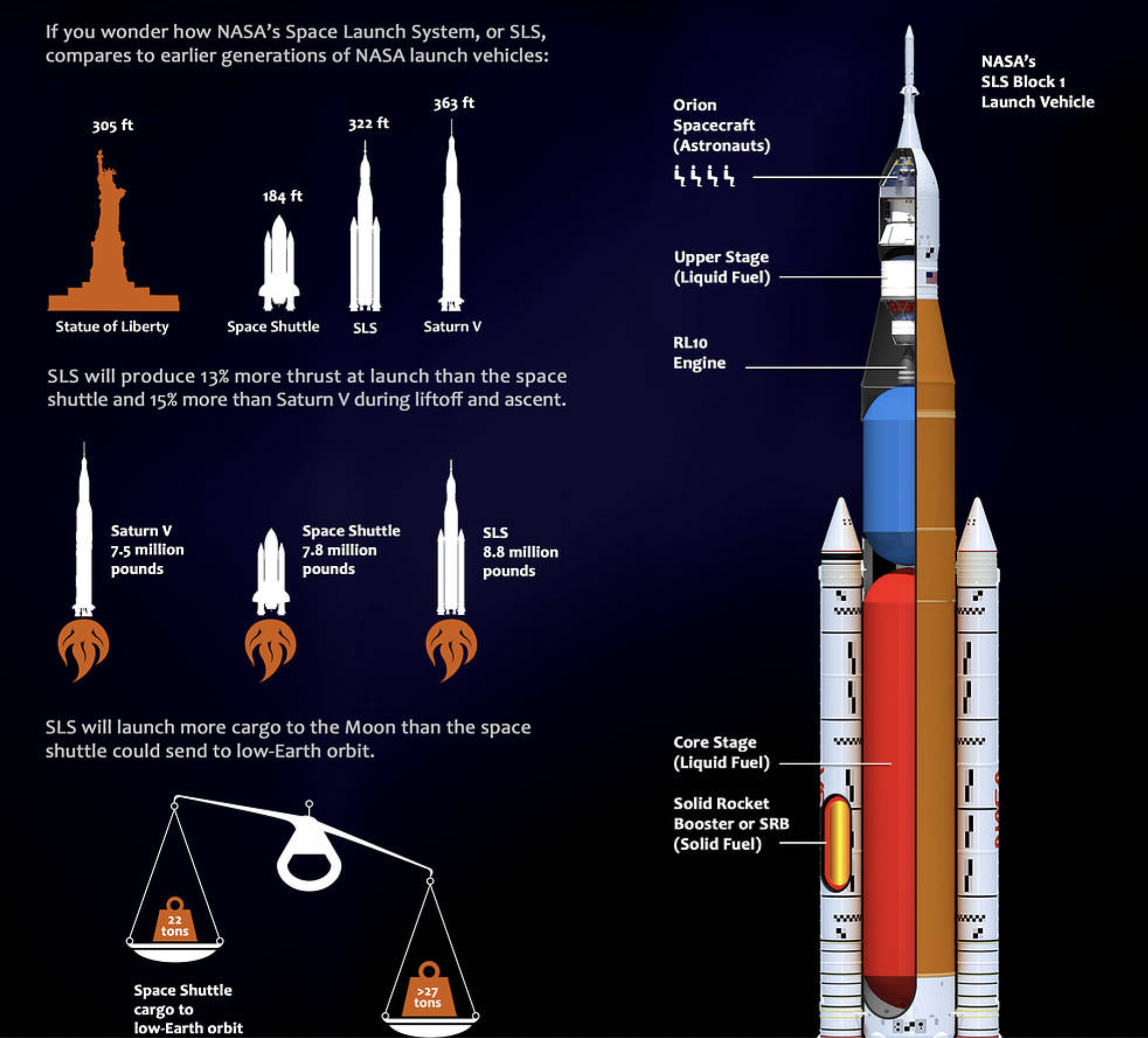Moon Mission Artemis I (NASA) Fact Sheet & Launch Schedule August 2022
NASA Moon Mission Fact Sheet — Artemis I
When: Tomorrow, August 29, 2022 is when Artemis I will launch from Florida. (weather permitting)
UPDATE: The launch was canceled this morning, due to unexpected fuel leaks! The next available launch window, weather permitting, is on September 2.
NASA.gov promotional graphic for tomorrow’s unmanned lunar orbit attempt.
The more than US $40 billion project is years behind schedule and billions over budget, and features frankly outdated tech compared to SpaceX’s Starship configuration plans, but it is still an impressive moment — America is going back to the Moon.
The unmanned NASA Orion capsule will enter orbit around the Moon, testing important metrics for human health to ensure that a future mission in 2024 or 2025 using the Orion capsule is safe for Moon-bound visitors.
Why the return to the Moon, now?
NASA explains its justification and purpose for the costly launch as follows on its Artemis web site: “Investigate the Moon’s mysteries and learn more about our home planet and the universe. Learn how to live and operate on the surface of another celestial body where astronauts are just three days from home. Prove the technologies we need before sending astronauts on missions to Mars, which can take up to three years roundtrip.”
SLS / Orion launch capabilities
The graphic below (from NASA) shows the relative size and power of the Space Launch System, or SLS, which is the rocket system that will take Orion into lunar orbit from the launch pad in Florida, USA.
Above: a comparison of the SLS to prior rocket systems — it can reportedly lift more cargo to the Moon than the retired space shuttle could send into low Earth orbit.
The mission is an important one for NASA, and represents a renewed focus on crewed or “manned” missions to our lunar neighbor — and eventually Mars. According to NASA, the “rocket is capable of sending more than 27 metric tons (59,000 pounds) to the Moon. As the SLS evolves, it will have even more power and will be capable of lofting even heavier payloads to orbit.”
Need more of a space fix?
Check out the live video feed from the International Space Station here.
And get our research & updates newsletter in seconds here.


